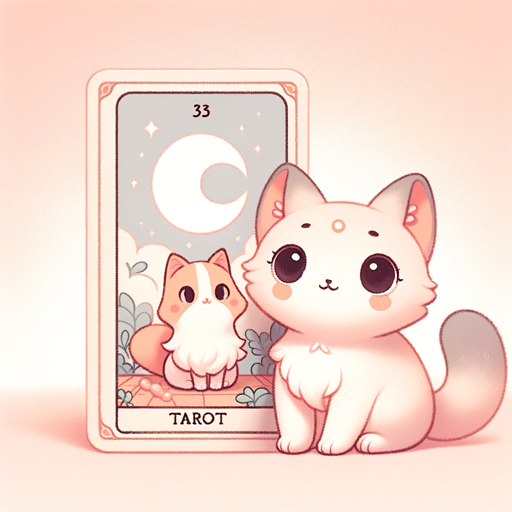Vulkan Guide-Vulkan SDK programming help
AI-powered Vulkan SDK assistance.
Can you explain Vulkan's rendering pipeline?
How do I optimize my Vulkan application?
What are Vulkan's synchronization features?
Guide me through Vulkan's memory management.
Related Tools
Load More
Crypto
Crypto News Realtime: Insights & Trends Unveiled. Explore the crypto universe with precise analysis.

Elden Ring GPT
🗡️An expert Elden Ring game consultant, I can help you with various aspects of the game such as game mechanics, equipment, character creation and boss strategies.
Unity3D-GPT
GPT for Unity Engine Development

Game Design Guide
Your guide in game design.

UE5 Helper
A witty guide for new UE5.3 and C++ game devs

Vue 3 BEST Practices 🚀
UPDATE 17.04 NEW PROMPT!!! Accurate Vue 3 Expert, Clear Explanations, Multilingual 🚀
20.0 / 5 (200 votes)
Introduction to Vulkan Guide
Vulkan Guide is designed as an expert assistant for learning and mastering the Vulkan SDK, with a strong emphasis on C++ for graphics programming. It provides detailed and accessible guidance on a wide array of Vulkan-related topics, making it a valuable resource for both novice and experienced developers. The guide aims to demystify complex Vulkan concepts, helping users to implement efficient and high-performance graphics applications. For example, Vulkan Guide can assist a beginner in setting up their first Vulkan project, walking them through each step with clear instructions and examples. For advanced users, it can offer in-depth explanations of rendering techniques, such as deferred shading or ray tracing, along with code snippets and optimization tips.

Main Functions of Vulkan Guide
Step-by-Step Tutorials
Example
A user setting up a Vulkan development environment for the first time can follow a comprehensive tutorial that covers installation, project setup, and basic rendering.
Scenario
A beginner graphics programmer needs to understand how to initialize Vulkan in a C++ project. Vulkan Guide provides a detailed tutorial, including code snippets, to help them get started.
Advanced Rendering Techniques
Example
An experienced developer wants to implement ray tracing in their application. Vulkan Guide offers a detailed explanation, including sample code and performance considerations.
Scenario
A graphics developer looking to enhance their engine with ray tracing capabilities can use Vulkan Guide to understand the necessary Vulkan extensions and how to integrate them effectively.
Debugging and Optimization Tips
Example
A developer encounters performance issues with their Vulkan application. Vulkan Guide provides strategies for identifying bottlenecks and optimizing rendering performance.
Scenario
During the development of a complex game, a programmer notices frame rate drops. They use Vulkan Guide to learn about GPU profiling tools and techniques to optimize their shaders and rendering pipeline.
Ideal Users of Vulkan Guide
Beginner Graphics Programmers
These users are new to Vulkan and graphics programming. They benefit from Vulkan Guide's step-by-step tutorials, clear explanations of fundamental concepts, and practical examples that help them build a strong foundation in Vulkan development.
Experienced Developers
These users have a solid understanding of graphics programming and seek to deepen their knowledge of Vulkan. They benefit from advanced tutorials, detailed explanations of sophisticated rendering techniques, and optimization tips that help them push the limits of what they can achieve with Vulkan.

How to Use Vulkan Guide
1
Visit aichatonline.org for a free trial without login, also no need for ChatGPT Plus.
2
Familiarize yourself with Vulkan SDK prerequisites, including setting up your development environment and installing necessary tools like Visual Studio and the Vulkan SDK.
3
Explore common use cases such as graphics programming, rendering techniques, and performance optimization by browsing the comprehensive guides and tutorials provided.
4
Utilize the Q&A section to find detailed answers to specific questions about Vulkan, covering various aspects of the API and best practices for its usage.
5
Engage with the community for additional support and insights, ensuring an optimal learning experience by leveraging shared knowledge and real-world examples.
Try other advanced and practical GPTs
💻Devin AI(Python Version)🤖
Empower Your Workflow with AI

OdooGPT
AI-Powered Odoo Assistance

Aya
AI-Powered Solutions for Modern Challenges

Assessor Jurídico
AI-Powered Corporate Legal Advisor.

Suno音乐歌词创作专家v3.6
AI-powered Lyrics and Music Creation
【NEO】AI Cat Generator
Transform your ideas into AI-powered cat stories.

Tarot Guide for Your Life
AI-powered Tarot insights at your fingertips.

WriteBot
Enhance Your Writing with AI Precision

WooCommerce Product Description Pro
AI-powered product descriptions for WooCommerce
ProStrategixUkraine
AI-powered Business & Design Expert

Fourier Analysis Tutor
AI-powered tool for mastering Fourier Analysis.

Txyz AI
AI-driven solutions for all your writing needs

- Performance Optimization
- Community Support
- Rendering Techniques
- Graphics Programming
- Vulkan Tutorials
Frequently Asked Questions about Vulkan Guide
What are the prerequisites for using Vulkan Guide?
To use Vulkan Guide effectively, you should have a basic understanding of C++ programming and graphics concepts. Additionally, ensure that you have installed the Vulkan SDK and a compatible development environment like Visual Studio.
How can Vulkan Guide assist with advanced rendering techniques?
Vulkan Guide provides detailed tutorials and examples on advanced rendering techniques, including deferred shading, ray tracing, and Vulkan Compute. These resources are designed to help you implement complex graphics features in your applications.
Can Vulkan Guide help optimize performance in my Vulkan applications?
Yes, Vulkan Guide offers extensive tips and best practices for performance optimization, including efficient resource management, pipeline state objects, and synchronization strategies to ensure your applications run smoothly and efficiently.
Is there community support available through Vulkan Guide?
Absolutely. Vulkan Guide encourages community engagement, offering forums and discussion platforms where users can share insights, ask questions, and collaborate on Vulkan-related projects, enhancing the overall learning experience.
How do I get started with Vulkan Guide?
To get started, visit aichatonline.org for a free trial without login. Begin by exploring the basic tutorials and gradually move on to more advanced topics. Make use of the detailed Q&A section and community support for a comprehensive learning journey.